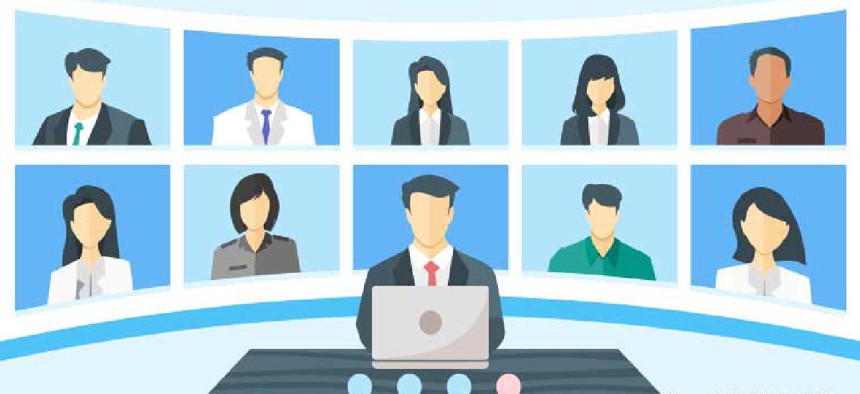The COVID-19 crisis presents an opportunity to transform the federal workforce

The forced social experiment brought on by the COVID-19 pandemic is compelling the federal government to adapt culturally and technologically at a rapid pace.

"When written in Chinese, the word 'crisis' is composed of two characters - one represents danger and one represents opportunity."- John F. Kennedy
On March 13, the U.S. Office of Management and Budget (OMB) issued guidance to federal agencies encouraging federal employees and contractors to "maximize telework flexibilities," especially those who were at-risk or living in areas where there had been community spread of COVID-19. This guidance came as President Trump declared the coronavirus pandemic a national emergency and the U.S. Department of Defense (DoD) announced it was prepared to reduce its on-site workforce by 50%.
This decision by DoD, the largest federal agency, appeared to signal that the government would move toward more expansive teleworking policies. However, over the course of the following week, the lack of cogent direction for individual agencies on COVID-19 responses became increasingly clear. While private-sector companies proactively closed offices and instituted teleworking plans to limit the potential for the virus to spread and ensure continuity of operations, federal agencies continued to waffle about closures and teleworking, highlighting the widespread inadequacy of federal crises response plans.
The cause of this confusion lies in the largely traditional workplace culture of most federal agencies, including a pervasive risk-averse approach toward teleworking. While some jobs must be completed on-site due to security concerns or the availability of specific equipment, others have no such restrictions and remained on-location simply because they'd always been so. In addition, many federal contractors work under terms that prohibit off-site work. Consequently, many agencies had to scramble to consider what functions could be performed remotely, which employees should be eligible for telework, and how to supply employees with needed off-site tools such as laptops, MiFis, VPN tokens and collaborative software.
The sudden need for telework hit those agencies requiring security clearance particularly hard. Their culture is based on strict security clearances at multiple levels, classified networks, and highly secure facilities called Sensitive Compartmented Information Facilities (SCIFs). To make things more complicated, these high-security agencies were already dealing with radical technological shifts. Technological advances, such as open-source data, satellite imagery, cellphone tracking data and facial recognition being leveraged by commercial companies in Silicon Valley to Wall Street, were already pushing the government to rethink their highly "secretive" methods of operation. The COVID-19 challenge added another layer of unprecedented urgency to review federal security policies, technologies, and procedures.
The forced social experiment brought on by the COVID-19 pandemic is compelling the federal government to adapt culturally and technologically at a rapid pace. Federal workers have turned to government-approved technology such as Skype, WebEx, and Slack to meet, collaborate, and in many cases, just to commiserate about the stress brought on by the mortality and uncertainty of the global catastrophe.
As a result, federal officials and managers are learning that "out-of-sight" does not mean "out-of-mind." Workers are juggling deadlines and responsibilities as family duties become ever more present. Colleagues continue to talk -- in many cases now more often, and more effectively. With no other alternatives, managers are trusting their people to do the right thing. In effect, teams are performing better due to the trust placed in them and the removal of the need for "physical presence"
Make no mistake, such a transformation is not easy in a government culture where trust is built over years of face-to-face meetings. There are real counterintelligence and operational security challenges that must be overcome, especially when operating in an unclassified setting. New policies and technologies must be developed to mitigate security concerns while accelerating open-source missions.
If the federal government makes the most of the opportunities presented by this crisis, we will find agencies adopting the highly efficient and cost-effective culture of distributed teams. Policies and procedures will be altered for both federal employees and contractors to leverage the best talent available across the nation. New classification norms and workforce, along with secure technology and teleworking guidance for all of federal government, will become the norm.





